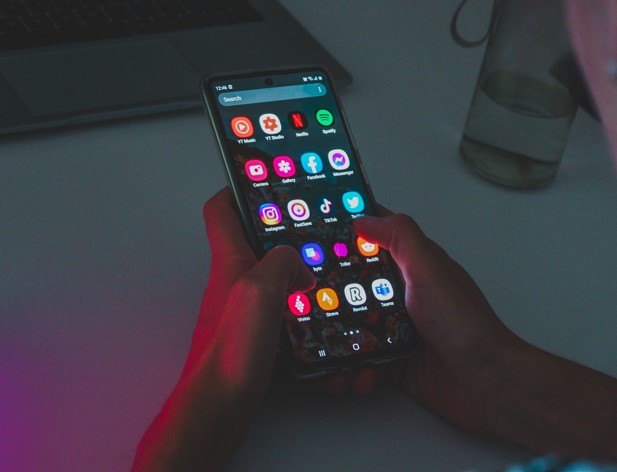Social Media for Kids and teens is more than a phrase; it’s a significant part of their digital universe. It reshapes communication, molds industries, and influences everything from politics to social movements, all within the past decade.
This landscape offers a mix of opportunities and challenges for kids and teens. For parents, understanding the pros and cons of social media is essential. It empowers them to steer their children towards safe and responsible use of these platforms.
Here, we will explore these critical aspects, shedding light on how to navigate the world of social media for kids and teens.
Table of Contents
How kids use social media
Social media isn’t fading away. Understanding its impact is vital for parents managing their child’s digital engagement. A striking study by Nature Canada reveals a trend: students in grades 7-12 spend up to seven hours daily on screens, far exceeding the advised two-hour limit. This gap is a growing concern for experts.
Screen time for kids often equals social media time. A U.S. study highlights that YouTube and Instagram are the most used apps among teens. Yet, with TikTok’s rapid growth, this trend may shift. Kids are deeply immersed in social media, far beyond a harmless pastime.
Recognizing this, parents must learn about popular apps and their functions. Knowing what your kids consume on these platforms is crucial. It opens the door for meaningful discussions about effective and safe social media use.
Read also: The 5 social media trends evolving globally in 2023
Popular social media platforms for kids and teens
YouTube
A digital substitute for cable TV, YouTube dominates young viewers’ screens. A 2018 U.S. study found 81% of parents with kids 11 or younger let them watch YouTube. Vloggers captivate kids with creative content on crafts, makeup, or gaming. For younger audiences, there’s YouTube Kids, offering family-friendly content and enhanced parental controls.
Instagram thrives on image and video sharing. Kids often post daily life snippets, from pet pictures to fashion outings, often with artistic filters. It’s about capturing and sharing the moment, with even pets sometimes having their own Insta accounts.
TikTok
A social media phenomenon, TikTok appeals strongly to the 10-19 age group. It’s a hub for viral dances and TikTok Challenges, often led by teens. The platform has also become a key site for music discovery, with users dancing to tunes from various artists.
Snapchat
Focused on fleeting moments, Snapchat’s content disappears within 24 hours. Kids and teens engage in creating ‘Snapstreaks’ – ongoing video message exchanges with friends. This encourages constant interaction and has become a favored feature among the young audience.
Twitch
Primarily a haven for gamers, Twitch allows users to live stream or watch others play games. With over 9 million active streamers, it’s a leading platform for gaming content. Twitch also hosts esports events, drawing significant interest from teen audiences.
These platforms showcase how kids and teens are deeply engaged in varied digital experiences, from creative expression to interactive gaming and social interaction.
Pros of social media for teens and kids
The main pros of social media for teens and kids are:
- Connecting with friends
Social media excels in bridging distances. It lets kids stay in touch with friends regardless of location. This is particularly valuable when in-person meetings aren’t possible, maintaining important social connections.
- Educational opportunities
Surprisingly, social media is an educational hub. Platforms like YouTube offer vast learning resources. Even TikTok receives acclaim for its educational content, presenting an unconventional yet effective teaching tool.
- Entrepreneurship and business skills
Young influencers are making substantial earnings through sponsorships on social media. Beyond influencer status, these platforms are pivotal for kids and teens starting and growing their online businesses, teaching them entrepreneurship skills.
- Entertainment and self-expression
Social media is a playground for self-expression. Kids and teens explore and share their talents, be it in dance, song, or comedy. It’s a space for creativity and enjoyment, allowing them to showcase their unique personalities and interests.
Cons of social media for teens and kids
The possible cons of social media in the hand of kids and teens are:
- Cyberbullying
Social media often becomes a breeding ground for meanness. Kids can post hurtful comments and gang up on others, leading to cyberbullying. This digital harassment has real and harmful effects on a child’s well-being, just as much as real-life bullying.
- Formation of bad habits
Excessive screen time can foster unhealthy habits. It may lead to social anxiety, self-image issues, and FOMO (fear of missing out). Constant exposure to social media can blur the line between virtual and real life, impacting healthy social development.
- Mental health impact
Social media often showcases a “highlight reel” of others’ lives, which can make kids feel inadequate about their own. The pressure to match an unrealistic standard can be overwhelming, negatively affecting their mental health. Issues like social media-induced depression and addiction are prevalent, highlighting the need for parental intervention, conversations, and setting boundaries.
Help kids use social media responsibly
Your kids are likely to be active on social media, and probably for extended periods. As a parent, it’s crucial to ensure their online experience is not only enjoyable and entertaining but also has some educational value.
This responsibility involves guiding them towards content that enriches their understanding and respects their well-being while also being engaging. By playing an active role in their digital lives, you can help your kids navigate the vast, complex world of social media responsibly and beneficially.












